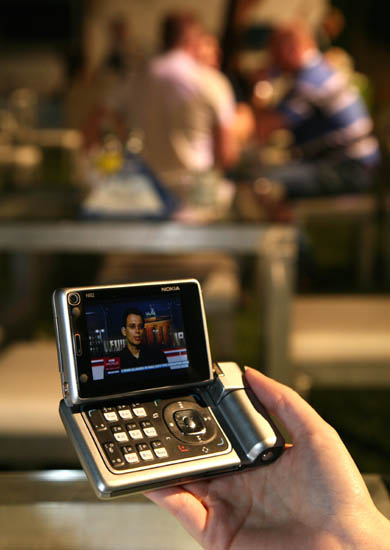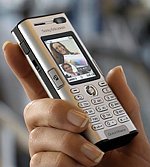Sony Ericsson and Nokia to co-operate on DVB-H interoperability
15 February 2006 by axxxr Sony Ericsson and Nokia announced their intention to co-operate to achieve interoperability in DVB-H enabled devices and secure multivendor mobile TV services and pilots from 2006 onwards.
There are going to be a multitude of technologies that will enable consumers to access different types of content over mobile phones. Sony Ericsson and Nokia recognize DVB-H as the preferred technology for terrestrial digital broadcast mobile TV, with both parties being active in ongoing standardisation and technology development to enable an improved mobile TV experience for the consumers. To secure interoperability in multi-vendor mobile TV service pilots, the Open Air Interface implementation guidelines, publicly available on the web www.nokia.com/mobiletv will be used. Current and future technologies within related standardisation bodies will be reflected in future releases of the OAI implementation guidelines and compatible products. "Sony Ericsson believes that mobile TV will be a key growth area for the mobile phone industry in terms of handsets, applications, content and services. With our unique background in telecommunications and audio visual technology, we are ideally positioned to take advantage of these new exciting business opportunities" said Mats Lindoff, Chief Technology Officer, Sony Ericsson. "We are pleased to announce this co-operation with Nokia on developing DVB-H interoperability as we believe this will be one of the key technologies driving the mobile TV market in the future." "Availability of interoperable DVB-H enabled mobile devices is crucial in opening up the mass market for broadcast mobile TV," says Ilkka Raiskinen, Senior Vice President, Multimedia Experiences, Nokia. "We are delighted to see that the Open Air Interface (OAI) implementation guidelines which we published in August 2005 can serve as a concrete starting point for interoperability. We are confident that DVB-H will be the technology that enables the best broadcast TV experience on mobile devices." DVB-H technology complements existing operator networks, optimizing capacity and quality.It offers consumers the chance to enjoy high quality terrestrial digital broadcasts along with voice telephony and internet access all in a single device. Broadcast mobile TV will offer new business opportunities for mobile service providers, content and broadcast companies, infrastructure and handset manufacturers as well as technology providers. The feedback from different mobile TV pilots has been promising. The recent interim results from the Oxford Mobile TV Trial showed that there is clear consumer demand for the service and that 83% of the pilot participants are satisfied with the end-to-end service provided.  |











 RSS feed
RSS feed